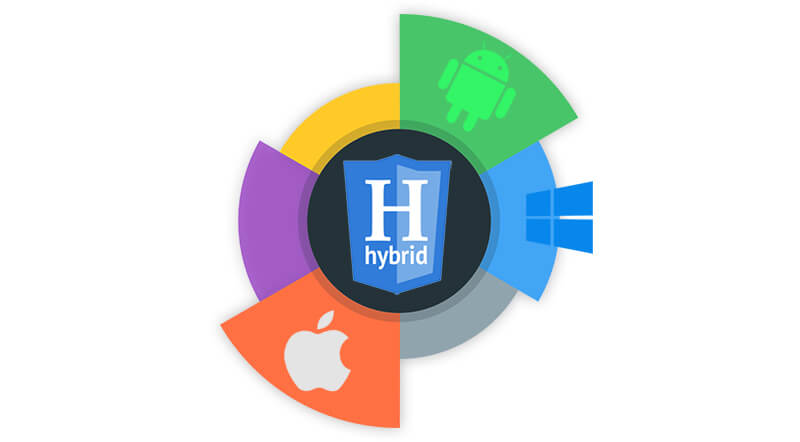In a market fraught with stiff competition, a quick time-to-market app can make all the difference. An app that takes forever to build and deploy can crash and burn even before it goes off the shelf.
Android app development is especially notorious for its sluggish speed. CEOs of businesses are constantly struggling to meet deadlines and take their app to the market before competitors pinch the app idea. In this tussle between speed and quality, often quality is sidelined and what results is a product that doesn’t meet your or your audience’s needs and expectations.
Since android app development speed is such a relevant issue, we have compiled a set of handy tips that can help you create android apps speedily, without compromising on quality.
1. Use the latest tools
All android developers are faced with the same dilemma: too much to do and too little time to do it! Designing, prototyping, coding, testing, debugging, and the list of tasks goes on. While some of these vital steps have no short-cuts, there are valuable tools to help with others.
Here’s our countdown of developer must-have tools that can speed up android app development process:
Genymotion

A sleek emulator that can simulate built-in sensors that a device model has. This emulator supports all existing versions of Android, cutting the need for re-configuring for different devices.
Hierarchy Viewer
A great tool to view your app’s tree and analyze its flaws for debugging and testing purposes. This tool, available in Android SDK, helps speed up app development by letting you merge and remove redundant elements in your app.
LeakCanary
Detecting memory leaks is a specialized function of this tool. These bugs are very hard to debug and the tool will ensure no leakage escapes your notice. Debugging becomes rapid and mobile.
Vysor
This tools helps developers in sharing screens between their workstations and Android devices, using just a Chrome plug-in. the tool is an answer to most developers’ prayers who find it complicated to root devices via USB. With this tool, you can share app features live with the client and receive instant feedback which is always great for the development process.
Butterknife
An awesome tool to improve the coding rate and readability of your boilerplate codes. This tool is a great time saver for all businesses looking to cut down app development time.
2. Low-fidelity wireframes are speedier
Wire framing is an essential step in the app development process. Using low-fidelity wireframes is better option than high-fidelity ones. These wireframes are less detailed and more fluid but they give a clear enough picture to developers and UI designers.
Going headfirst into coding is not advisable and most experienced Android app developers know this. The most crucial first step is to get designers, developers, coders and project managers on the same page. Low-fidelity wireframes do just that. They are quick to develop and are a good blueprint for the entire development team.
3. Go Lean
A commonly-accepted best practice in Android app development is to launch a Minimum Viable Product (MVP) with just the basic features and no frills, instead of waiting to develop and launch a full-fledged app. The MVP will help you collect user data about what’s working and what’s not. Use the build-measure-learn feedback loop to get invaluable lessons about customer feedback. This approach diminishes the risk element of your app and makes for an app that is more likely to appeal and succeed.

Another facet is using short iterations or “sprints” to break up the entire app model into smaller, doable cycles. Each sprint is complete in itself-it has the entire gamut of development steps and results in an improvised version of the previous sprint product. Go agile in your development process. Reduce redundancy of effort and resources. This not only helps reduce development time but also saves production costs. And of course, the ultimate benefit is a risk-free product that starts churning ROI from the moment it’s launched.
4. Delegate off-core activities
It’s always a wise choice to offload additional activities such as enhancing app engagement, measuring app analytics and converting free subscribers to premium ones. These activities eat up a lot of time and are better off with pre-designed applets, available at mobile engagement platforms. These applets can be incorporated in your ready app with just a few lines of code. Applets enable activities such as sharing tools, offer notification, new features tools and feedback tools.
5. Don’t disqualify hybrid app development

Cross-platform apps allow you to code for one app and get multiple apps that can run on all covered platforms. Hybrid app development is speedier than native app development, though it has its own set of drawbacks. But for quick market penetration, cross-platform apps may be the best choice. Later, one can go in for native apps that are more inherent, fluid and robust.
6. Opt for automated testing
Automated testing is a sure shot measure to get secure, fully-tested apps in a fraction of time than the ones deploying manual testing. Automated testing tests an app against a full suite of testing tools simultaneously, instead of one-by-one as in manual testing. This improves test coverage, reduces testing time, and guarantees a bug-free product that is market ready.
7. Outsource specialized development steps
In-house app development is not everybody’s cup of tea. The app market is fast evolving and new apps are entering the market every day. To remain competitive, timely and relevant, one can outsource app development to skilled, specialized Android app development companies. Even if you possess the capabilities to code or design an Android app, use domain experts for putting the whole product together and maintaining it. Not only will you get better returns on development costs, you will offload the hassle of running tasks that will be better handled by experienced professionals.
A common misconception shared by businesses is their misplaced fear about the cost of outsourcing. Most app development companies have flexible engagement models that can match product development costs to your budget. Fixed cost; time and material; and build, operate and transfer models can be evaluated to arrive at a business solution that works in your favor.
8. Create build variants
Loading your app with unnecessary configurations can slow down your app’s incremental builds. Retain only those configurations in your app that are required in its development and release versions. Plus, don’t waste time and effort in compiling additional resources that hold little value. Such resources include screen density resources and additional language localizations.
Manage your app development time strategically in get ahead of competition and meet tight deadlines. A minute lost in development can translate to huge monetary losses. A good mobile app development company will micro-manage tasks of developments in such a way that your app hits the markets at top speed!

strategies your digital product.




